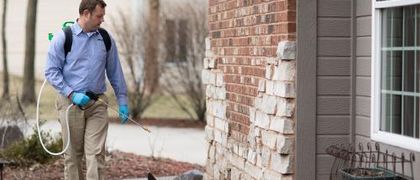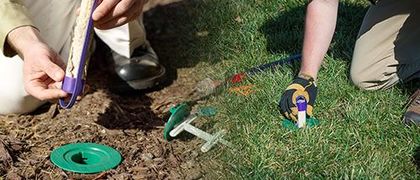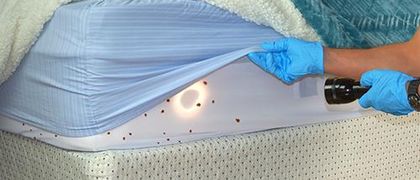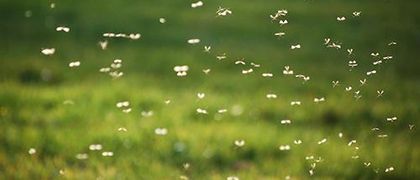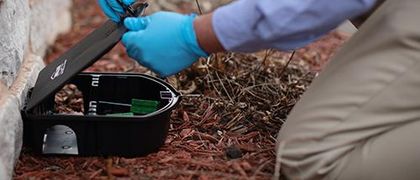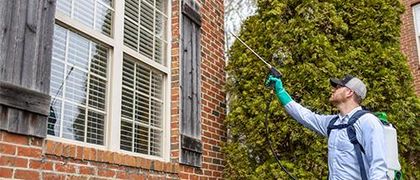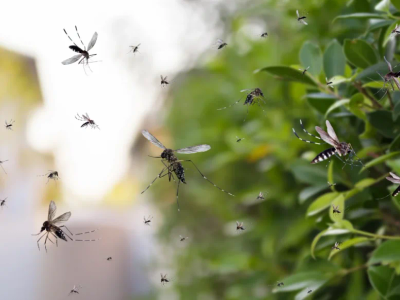What do termites look like?
- Size: Range in size from 1/8 to 1 inch, depending on the caste
- Color: Workers are a pale white hue; soldiers have a similarly colored body but with a brown head; termite swarmers (reproductives) often are dark brown or black with white/clear wings.
- Body Structure: Workers and soldiers feature an elongated oval body with six legs and antennae. The soldier is characterized by a larger, brown head with prominent mandibles. Swarmers, also known as “primary reproductives,” feature similar bodies as workers only with wings. Unlike ants, they do not have segmented bodies.

Characteristics of termites
Subterranean termites are organized by a caste system with workers, soldiers, primary reproductives/swarmers, secondary reproductives, and finally kings and queens. Termites begin the life cycle by swarming. After winged males and females mate, they shed their wings and begin a new colony, becoming the “king” and “queen.” As king and queen, they are the sole reproducers. After the queen’s eggs hatch, the offspring assume the various roles of the caste. Primary reproductives eventually leave the colony to swarm, mate and form new colonies. Wingless secondary reproductives, however, never leave the colony and are present to support the queen. Workers are sexually underdeveloped and do not mate; instead, they oversee building tunnels as well as feeding other castes. Soldiers handle defense of the colony, using their large mouthparts to fight off predators. Queens may live up to 50 years under ideal conditions and produce tens of thousands of eggs in her lifetime. Workers and soldiers, on the other hand, live about 1-2 years.
When are termites most active?
Where do termites live?
Dependent upon moisture for survival, subterranean termites are social insects residing in underground colonies containing as many as several thousand members. The colonies feature an intricate series of tunnels leading to food sources. Termites reach above-ground food sources by constructing mud tubes. The mud tubes shelter subterranean termites from the elements, allowing them to transport food in a moist environment.
What do termites eat?
Termites feed on wood and products containing cellulose – a plant fiber extracted from wood. They do not eat other insects.
How can I tell if I have termites?
A tell-tale sign of termite infestation is mud tubes running along a foundation or along beams in a basement area of a home. Likewise, termites swarming around your home is an obvious sign that termites are lurking nearby. You may also observe:
- Discolored drywall
- Peeling or bubbling paint that looks like water damage
- Wood that sounds hollow when tapped
- Buckling floors and drooping ceilings
- Excessively squeaky floorboards
Are termites dangerous?
Subterranean termites are not a threat to people, but they are a serious threat to homes and wood structures. These wood-destroying insects can cause extensive damage with their hard, saw-toothed jaws. In fact, annual termite damage in the U.S. exceeds five billion dollars.
Why do I have a termite infestation?
Termites are attracted to moisture and water-damaged wood. Here are a few conditions (not a comprehensive list) that could contribute to a termite infestation:
- Leaky pipes
- Ventilation issues
- Cracks in the foundation
- Mulch too close to your home
- Firewood touching the house
- Rotting trees and stumps on the property
- Roofing problems
How do I get rid of termites?
If you discover mud tubes around a foundation, spot swarmers in or near your home, or have reason to believe termites have infested your home, contact a pest control professional immediately. A trained professional will be equipped to locate the colony and tunnels and then administer proper treatment.
Here at Miller Pest & Termite, our experienced termite exterminators have been getting rid of termites in Des Moines, Kansas City, and throughout our multi-state service area since 2001 and are ready to deliver the best termite treatments in the Midwest!
How can I prevent a termite problem?
To prevent termites from infesting and damaging your structure, our pest control specialists recommend:
- Sealing all potential entry points
- Reducing humidity and address ventilation issues
- Removing/replacing water-damaged wood inside your home
- Diverting water away from the foundation with downspouts and gutters
- Fixing leaks and moisture problems
- Clearing dead or decaying trees and stumps from your property
- Limiting the amount of mulch on your property


Get Help Now!





